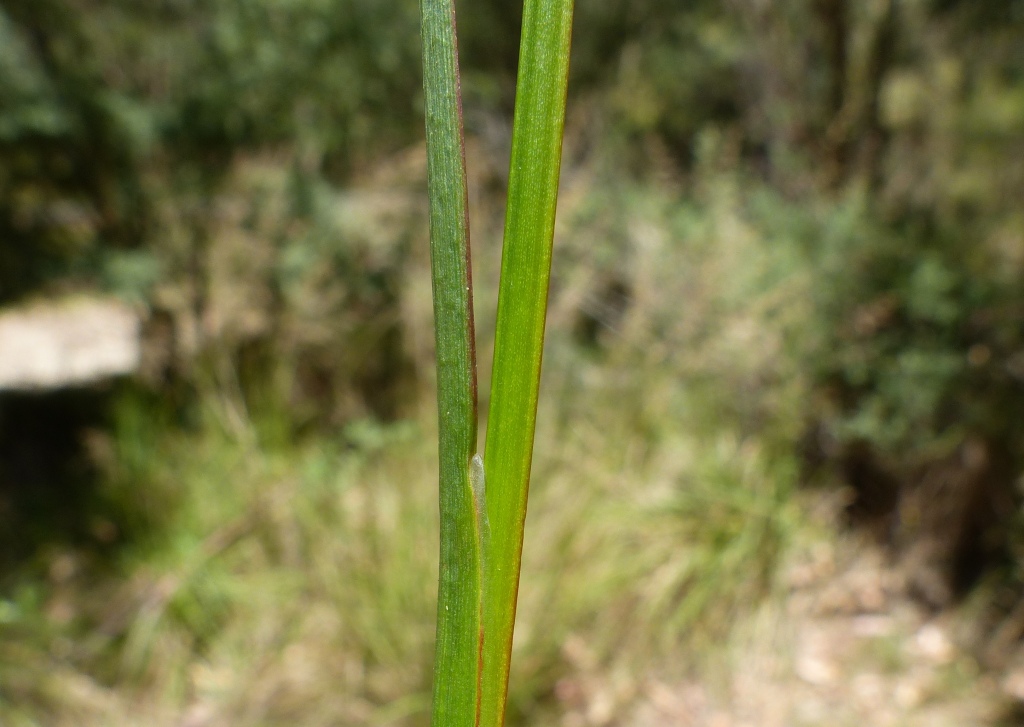Juncus prismatocarpus subsp. prismatocarpus
Tufted, shortly rhizomatous perennial. Culms erect or occasionally decumbent, new shoots sometimes arising from nodes, to c. 60 cm high. Leaves mostly cauline; blade hollow, with several longitudinal tubes, the individual tubes transversely septate (septa obvious in dried material), usually shorter than the culms, distinctly compressed, 1.2–5.5 mm wide, apex acute or rarely obtuse; auricles obtuse, to c. 1 mm long. Inflorescence of c. 4–70 usually discrete (often distant) clusters of 4–40 flowers, (6–)9–12(–13) mm wide in fruit; primary bract shorter than the inflorescence; prophylls absent. Tepal midrib green (± reddish tinged) turning light brown, margin pale, membranous; outer tepals (2.8–)3–5.5 mm long, acute and often curved at tip; inner equal to or longer than outer, acute; stamens 3, anthers 0.4–1 mm long. Capsules light brown, trigonous-ovoid, 4–5 mm long, exceeding tepals, tapering gradually to an acute-acuminate apex; seeds 0.4–0.6 mm long, finely reticulate-patterned discernible at moderately high magnification, minutely apiculate at each end. Flowers and fruits all year.
VVP, VRiv, MuF, GipP, Gold, CVU, DunT, NIS, EGL, EGU, HSF, HNF, Strz, MonT, VAlp. Also SA, Qld, NSW, ACT. In Victoria, principally in the east, in flood plain and riparian vegetation.
 Spinning
Spinning